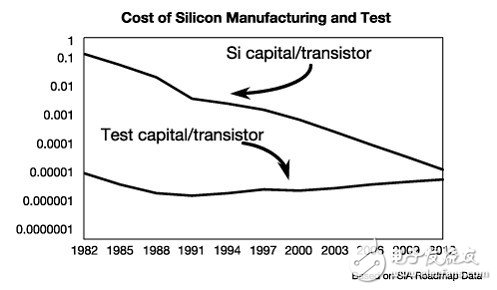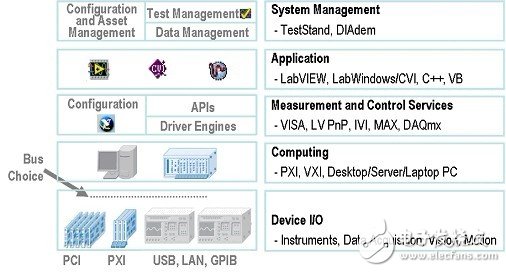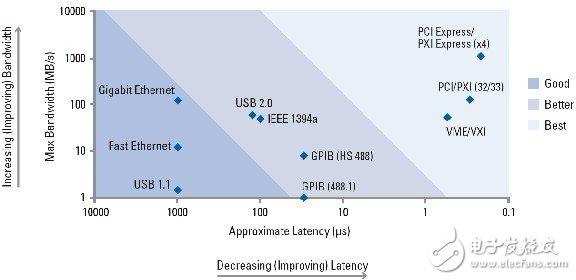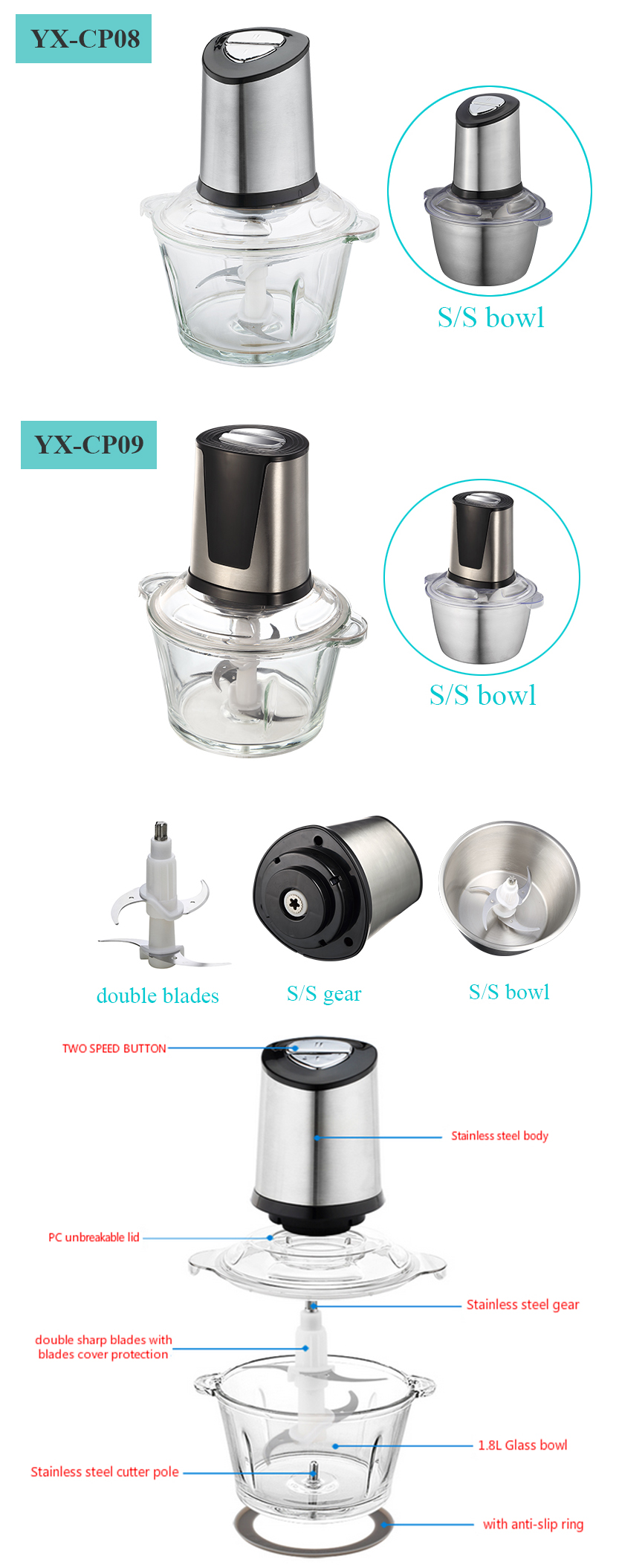1. Introduction: Design Challenges for Automated Test Systems
Test managers and engineers use automated test systems in a variety of applications, from design verification to end-product testing to equipment maintenance diagnostics, to ensure the quality and reliability of the products delivered to the customer. They use automated test systems to perform simple "pass" or "fail" tests or perform a full set of product characterization tests through it. As the cost of product defects detection in the later stages of the design cycle is on the rise, automated test systems are rapidly becoming an important part of the product development process. This "Designing Next Generation Automated Testing" article describes some of the challenges that force engineering teams to reduce testing costs and time. This article also provides insight into how test managers and engineers can overcome these challenges by building modular software-defined test systems. This test system significantly increases the throughput and flexibility of the test system while reducing overall cost.
Today's test engineers are facing a new set of pressures. The product development environment they face is as follows:
· Product design is more complex than previous generations
· Development cycle requirements are getting shorter and shorter in order to remain competitive and meet customer requirements
· Product testing costs are getting higher and higher, and budgets are getting less and less
Increasing design complexity
Today, the most obvious trend in test and measurement is the increasing complexity of devices. For example, the consumer electronics, communications, and semiconductor industries continue to demand integration of digital image/video, high fidelity audio, wireless communications, and Internet connectivity into a single product. Even in cars, complex automotive entertainment and information systems, safety and early warning systems, and control electronics on the body and engine are integrated. The design of the test system requires not only the flexibility to support extensive testing of different product models, but also the need to be able to upgrade to provide more test points for new test functions.
Shorter product development cycle
Design and test engineering teams can only continually shorten the product development cycle because they want to continuously improve new products and technologies and have the competitive nature of the market's first share. To do this, engineering teams must design new test strategies to reduce test time and improve test efficiency from design to production.
Increasing test costs and decreasing test budgets
Increasing device capabilities often leads to more expensive and time-consuming testing procedures. However, the cost of building each function is reduced, forcing the engineering department to reduce costs and budgets, as shown in Figure 1. Engineers must improve their testing strategies to reduce total costs by increasing test system throughput, reducing maintenance and upgrade costs, and the necessary capital investment.

Figure 1. Data from the SIA shows that over time, the cost of silicon (or device functionality) is decreasing,
But the cost of testing continues to increase.
2. Increasing test costs and decreasing test budgets
In response to the challenges of increased device complexity, reduced development cycles, and reduced budgets, test managers and engineers were forced to abandon traditional test design strategies based on traditional box instruments or "big iron" proprietary ATE systems. These stand-alone instruments lack the flexibility necessary for software processing, and the user interface is vendor-defined and can only be firmware-updated by the vendor. In this way, tests that are not defined in the instrument firmware and tests of the new standard are difficult to perform; or when changes are required, it is difficult to modify the system. Because these devices were originally designed as stand-alone instruments, they lack the necessary integration capabilities, such as data streaming and synchronization. A proprietary ATE system (such as a highly integrated product chip tester) can provide the required performance, but at a relatively high cost, may cause the engineering team to be obsolete and premature system redesign.
In response to these situations, test managers and engineers are implementing modular software-defined test structures. This structure is based on widely adopted industry standards and can provide:
· Higher test system flexibility: scalable to multiple applications, business units, and individual product stages
High-performance structure: Significantly improve test system throughput and provide close contact and integration with different instrument manufacturers, including precision DC signals, high-speed analog and digital signal and RF signal generation and analysis.
· Lower test system investment: Reduce initial capital investment and maintenance costs while increasing equipment usage in multiple test requirements
· Longer test system life: Based on widely adopted industry standards, allowing technology upgrades to improve performance and meet future test needs
As a leader in automated testing, National Instruments is dedicated to providing product engineers with the hardware and software they need to design a new generation of automated test systems. This in-depth developer guide contains the information you need to design a new generation of automated test system architectures. The introduction section describes a test system architecture as shown in Figure 2, which provides engineers with strategies to address the increased complexity of the device, the shortened development cycle, and reduced budget.

Figure 2. National Instruments provides a complete software and hardware solution for designing automated test systems.
3. Hierarchy 5: Automated Test System Management Software
Automated test systems require a variety of tasks and measurement functions: some of these tasks and functions are related to the device under test (DUT), while others are common to each device under test. In order to minimize maintenance costs and ensure the life of the test system, it is important to implement a test strategy that separates DUT-level tasks from system-level tasks so that engineers can quickly reuse and maintain them throughout the development cycle. Modify the test program (or module) to meet specific test needs.
In all test systems, there are different operations depending on the device under test, and there are operations common to all devices under test, such as system level tasks.
Different operations for each device
• Instrument configuration
• Measurement
• data collection
• Result analysis
• Calibration
• Test module
General operation for each device
• Operator interface
• User Management
• DUT tracking
• Test flow control
• Store results
• testing report
Some companies have written their own test executors and have allocated valuable engineering resources to develop test management software from scratch. This usually leads to a drop in productivity and a long-term resource occupation in order to maintain the software. To maximize productivity, engineering teams should use commercially available test management software, such as NI TestStand software, to reduce the development of common operations for each device. By using this software, engineers can focus on the development of proprietary operations for each device. For more information, check out the "Developing a Modular Software Architecture" white paper.
4. Structure Level 4: Application Development Software
In the test system architecture, the application development environment (ADE), such as NI LabVIEW and LabWindows/CVI, plays a key role. With these tools, test system developers can communicate with a wide variety of instruments, integrate measurements, display information, connect to other applications, etc... Ideal for developing test and measurement applications, ADE needs to be easy to use and efficient. A range of application requirements such as compilation performance, integration with multiple I/Os, and programming flexibility. Ease of use is not just how quickly you can get started and use. With an easy-to-use ADE, developers can easily integrate processing routines with multiple measurement devices, create complex user interfaces, deploy and maintain applications, and modify applications as product design improvements and systems need to scale.
For more information, check out the Choosing the Right Software ApplicaTIon Development Environment white paper.
5. Structure Level 3: Measurement and Control Services
Measurement and control services provide the ability to connect to various hardware resources in the system, system configuration and diagnostic tools. For example, NI Measurement and AutomaTIon Explorer (MAX) can automatically detect hardware resources, including data acquisition, signal conditioning hardware; GPIB, USB and LAN-controlled instruments; PXI systems, VXI devices; modular instruments... They can be configured in one place. The integrated diagnostic test ensures that the device is functioning properly, and the test panel provides a quick way for developers to check the functionality of the hardware before starting programming. The measurement and control services also provide integration of the application development software layer through an application programming interface (API) so that developers can easily program their devices. In fact, the components of this service software—hardware drivers, application programming interfaces (APIs), and configuration managers—can be seamlessly integrated into the ADE to maximize performance, increase development productivity, and reduce total maintenance costs.
For more information, please see Development a Modular Software Architecturewhitepaper.
6. Structure Level 2: Calculation and Measurement Bus
The core components of each automated test system are computers (in the form of desktop PCs, server workstations, laptops, or embedded computers, used in conjunction with PXI and VXI). An important aspect of using a computing platform is the ability to connect (and communicate) with a wide variety of instruments in the test system. There are now a number of different instrument buses for standalone or modular instruments, including GPIB, USB, LAN, PCI, and PCI Express. These buses have different capabilities, and for some applications, some buses are more suitable than others. For example, the GPIB bus has a wide range of applications in instrument control and is widely available for instruments; the USB bus offers a wide range of availability, ease of connectivity, and high throughput; the LAN bus is ideal for distributed systems, and PCI Express The bus provides the most efficient performance.
The widespread use of personal computers has led to continuous advances in high-performance internal buses, including PCI and PCI Express buses, which have the lowest latency and highest data throughput or bandwidth. The PCI bus provides up to 132MB/s of bus bandwidth, and the PCI Express bus is an evolution of the PCI bus that provides 4GB/s of bandwidth to meet growing bandwidth demands while being fully software compatible with the PCI bus. Figure 3 illustrates the latency and bandwidth performance of the most popular instrument control bus.

Figure 3 compares the various instrument control buses. PCI and PCI Express buses provide better bandwidth and latency.
That is, better total throughput performance.
For more information, please refer to the "Hybrid Systems: IntegraTIng Your MulTI-Vendor, Multi-Platform Test Equipment" white paper and the "Instrument Bus Performance: Making Sense of Competing Bus Technologies for Instrument Control" white paper.
7. Structure Level 1: Measurement and Equipment I/O
Fundamentally, there are currently two types of instrument architectures – traditional and virtual. Figure 4 illustrates the similarities between the two architectures. Both have measurement hardware, chassis, power, bus, processor, operating system, and user interface.

Figure 4 The architecture of traditional instruments and virtual instruments has similar hardware components; the main difference between the two architectures is where the software exists and whether the user can access it.
From a hardware perspective, the most obvious difference is how components are organized. For each separate instrument, a traditional or stand-alone instrument puts all the components in the same box. Measurement functions, analysis, display, and control of the instrument are all defined by the supplier.
Conversely, modular software-defined virtual instruments integrate common measurement hardware to help users define their own measurement and user interfaces in software in addition to standard features. Using a modular approach, engineers can define the measurement capabilities of the test system and build scalable systems to meet future needs. With a modular, software-defined approach, users can make custom measurements, measure for emerging standards, or modify systems as their needs change (for example, adding instruments, channels, or new measurements). This flexible, user-defined software and scalable hardware combination is at the heart of modular instrumentation.
For more information, check out the Understanding a Modular Instrumentation System for Automated Test white paper and the PXI: The Industry Standard Platform for Instrumentation white paper.
8. Summary: Designing a new generation of automated test systems
Increased equipment complexity, reduced development cycles, and reduced budgets give engineering teams the opportunity to re-evaluate existing automated testing strategies and find ways to increase efficiency and reduce costs. When designing a new generation of automated test systems, it is important to incorporate strategies that increase system flexibility, provide higher measurement and throughput performance, reduce test system costs, and extend life. The modular software-defined automated test system overcomes the deficiencies of previous stand-alone instruments or costly proprietary ATE system solutions. The modular hardware platform is based on widely adopted industry-standard platforms such as PXI, allowing engineers to develop scalable test systems that tightly integrate the functions provided by individual instrument vendors. In addition, it allows engineering teams to integrate existing equipment investments to reduce the initial cost of implementation. With software-defined measurements of the latest PC technologies, such as multi-core processors and PCI Express buses, next-generation automated test systems can dramatically improve throughput performance and scale to meet the needs of different product phases and business units.
Many companies have implemented modular software-defined test system strategies and have demonstrated the return of this strategy to their investments. For example, based on NI LabVIEW and PXI modular instruments, Microsoft designed the test system for the Xbox 360 controller twice the speed of the previous generation test system. The US Air Force develops test architectures to support their advanced fighters. Using PC-based software and hardware architecture, they reduced costs and reduced test system size by half. Sanmina-SCI used NI TestStand and PXI products to build an FDA-approved drug device test system that exceeded their weekly Tested the requirements of 83,000 units and exceeded 95% of their production requirements.
9. National Instruments related products and white papers
As a leader in automated testing, National Instruments is dedicated to providing product engineers with the hardware and software they need to design a new generation of automated test systems.
software:
• NI TestStand Test Management Framework
• LabVIEW graphical programming language
• LabVIEW SignalExpress Interactive Measurement Software
hardware:
• Modular instruments (oscilloscopes, multimeters, RF modules, switches, etc.)
• Multi-function data collection
• PXI system components (chassis and controller)
• Instrument control (GPIB bus, USB bus and LAN)
Technical white paper
National Instruments provides the Developer's Guide to Designing a New Generation of Automated Test Systems. This guide is a collection of white papers designed to help develop test systems, reduce costs, increase test throughput, and scale to accommodate future needs. To download the full developer guide (120 pages), visit ni.com/automatedtest/en
Food Choppers :
Food Choppers are small kitchen appliance that break up all kinds of chunks meat into minced meat. Besides, food choppers can also be used to chop peanuts, onions, garlic, spices and other foods. Food choppers including Plastic Bowl Choppers, Glass Bowl Choppers and Stainless Steel Bowl Choppers. And food choppers can also be divided into 0.6L choppers, 1.2L Choppers , 1.8L Choppers according to different capacities.

Advantages of food choppers:
1. Stylish appearance.
2. Runs smoothly and efficiency.
3. Easy to disassemble and easy to clean.
4. Rugged and inexpensive
Weclome to send us any inquiry for more details.
Food Choppers
Food Choppers,Electric Food Chopper,Meat Chopper,Mini Food Chopper
Flying Electronic Co., Ltd , https://www.flyingelectronic.com